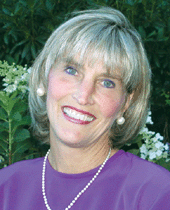To reply or delete: That is the question

Last byte | A conversation with Marsha Egan, Egan Email Solutions CEO.
E-mail could be one of the best technologicalinventions of the 20th century. It isinexpensive, fast and you can copy a lot ofpeople at once and you can share documentsat nearly the speed of light. When e-mail isused well, it is a great efficiency tool. If people use e-mail urgently, and thebosses use e-mail urgently, people in theoperation realize they have to look at everye-mail message as it comes in. The big challengehurting many people is that they areallowing e-mail to interrupt them. We recommend that in the averageworking environment no more than fivetimes a day. Do it first thing in the morning,mid-morning, after lunch, mid-afternoon and20 minutes before you close for the day. E-mail is not dialogue. Too many peopleuse e-mail in the place of dialogue. And they tryto use e-mail when they shouldn't be using email.We've all been on the wrong end of an e-mailthat was miscommunicated or misunderstood,and we know how much time and how much ofa tearing down of a relationship it created. E-mail is very good for sharing unemotionaland factual information, such as directionsto the meeting or the agenda for themeeting.When you and I are talking in person, it issaid that 70 percent to 80 percent is done byvoice inflexion and body language. With emailyou lose 70 percent to 80 percent of thecommunication. That probably explains whymany things are misinterpreted by e-mail. People need to change the way theyview their inbox, from that of a holding tankto that of a U.S. Postal Service mailbox. Youdon't put mail back in the mailbox after youpull it out. We recommend that whenever yougo into your inbox, you go with the intentionof sorting it as you would your USPS mail.You are going to delete some, you are goingto work on some immediately, and then youare going to sort the rest by what you need toact on and how fast you have to act on it.When people confuse working e-mail withsorting e-mail, they end up in their e-mail foran hour not working on the report the bosswants by the end of the day. Managing your e-mail is about managingyourself. In order to manage yourself,you need to know what your priorities are.Your priorities may be some of the items thatare delivered by e-mail, but I don't knowmany people who on their deathbed will say"Gee, I wish I'd done more e-mail."
 Love it or hate it, e-mail is here to stay. Marsha Egan, chief executive officer
Love it or hate it, e-mail is here to stay. Marsha Egan, chief executive officer
of Egan Email Solutions, said that when e-mail is used ineffectively, it
can be a corporate cancer that cripples the productivity of entire
organizations.
But it doesn't have to be that way. She has advised groups and businesses
such as the American Red Cross, Merrill Lynch and State Farm on ways to
put e-mail distractions aside and get their work done. Egan recently spoke
with Deputy Editor William Welsh about getting a grip on e-mail.
Q:Before we get into the downside, what is
the benefit of e-mail?
Egan:
Q: What is a common wasteful e-mail
practice?
Egan:
Q: How frequently should someone check
e-mail during the day?
Egan:
Q: How can people better manage their
e-mail?
Egan:
Q: How careful should people be about what
they put in an e-mail message?
Egan:
Q: How does someone get a grip on e-mail
when it starts to get out of hand?
Egan:
Q:What else is important to consider?
Egan:

Egan Email Solutions CEO Marsha Egan
of Egan Email Solutions, said that when e-mail is used ineffectively, it
can be a corporate cancer that cripples the productivity of entire
organizations.
But it doesn't have to be that way. She has advised groups and businesses
such as the American Red Cross, Merrill Lynch and State Farm on ways to
put e-mail distractions aside and get their work done. Egan recently spoke
with Deputy Editor William Welsh about getting a grip on e-mail.
Q:Before we get into the downside, what is
the benefit of e-mail?
Egan:
Q: What is a common wasteful e-mail
practice?
Egan:
Q: How frequently should someone check
e-mail during the day?
Egan:
Q: How can people better manage their
e-mail?
Egan:
Q: How careful should people be about what
they put in an e-mail message?
Egan:
Q: How does someone get a grip on e-mail
when it starts to get out of hand?
Egan:
Q:What else is important to consider?
Egan:
NEXT STORY: Planning, process and personnel